Planning your own trip? Prepare for your trip
Use Rough Guides' trusted partners for great rates
- Portugal
- Algarve
Plan and book your private, tailor-made tour with vetted local experts
Lagos is one of the Algarve’s most characterful towns, mixing history, nightlife, and a spectacular coastline. Inside its 16th-century walls, you’ll wander cobbled lanes lined with whitewashed houses, lively squares, and plenty of places to enjoy fresh seafood. Just beyond the center lie some of Portugal’s most celebrated beaches – from the dramatic cliffs of Ponta da Piedade to the golden sands of Meia Praia. This Lagos travel guide will help you make the most of your time here, if you’re planning a quick getaway or a longer stay to explore hidden coves, take boat trips to sea caves, or venture into the quiet countryside. With boutique hotels, creative restaurants, and a relaxed atmosphere, Lagos is the kind of place that draws you in and keeps you coming back.

Olá! I’m Luis, your local expert in Portugal. This Lagos travel guide will walk you through everything you need to know – how to get here, what to do, where to stay, and more. If you’re planning a trip to Portugal, Lagos is a must for its beaches, history, and laid-back vibe. I’ve helped countless travelers enjoy this corner of the Algarve, from those chasing golden sunsets to families looking for calm, shallow waters. Whatever brings you here, I’ll help you make the most of it.
Luis’s tip
Take a kayak out from Praia do Batata just after sunrise. You’ll paddle through glassy water, slip under arches, and reach hidden grottoes before the boat tours start. Bring a mask and snorkel – if the sea’s calm, you might spot octopus or schools of shimmering fish in the shallows.
Best time to visit
Spring (April-June) and autumn (September-October) are ideal – warm days, swimmable seas, and fewer crowds. July and August bring peak heat, busy beaches, and higher prices. Winter is quieter, with mild weather and lower rates, though some boat tours and restaurants may close.
How to get to Lagos
The nearest airport is Faro, about 90 km away. From there, you can take a train, bus, or private transfer in around 2 hours. Trains from Lisbon take roughly 4-5 hours, with a change in Tunes. Driving offers the most flexibility, especially if you want to explore nearby beaches and villages.
Best areas to stay in Lagos
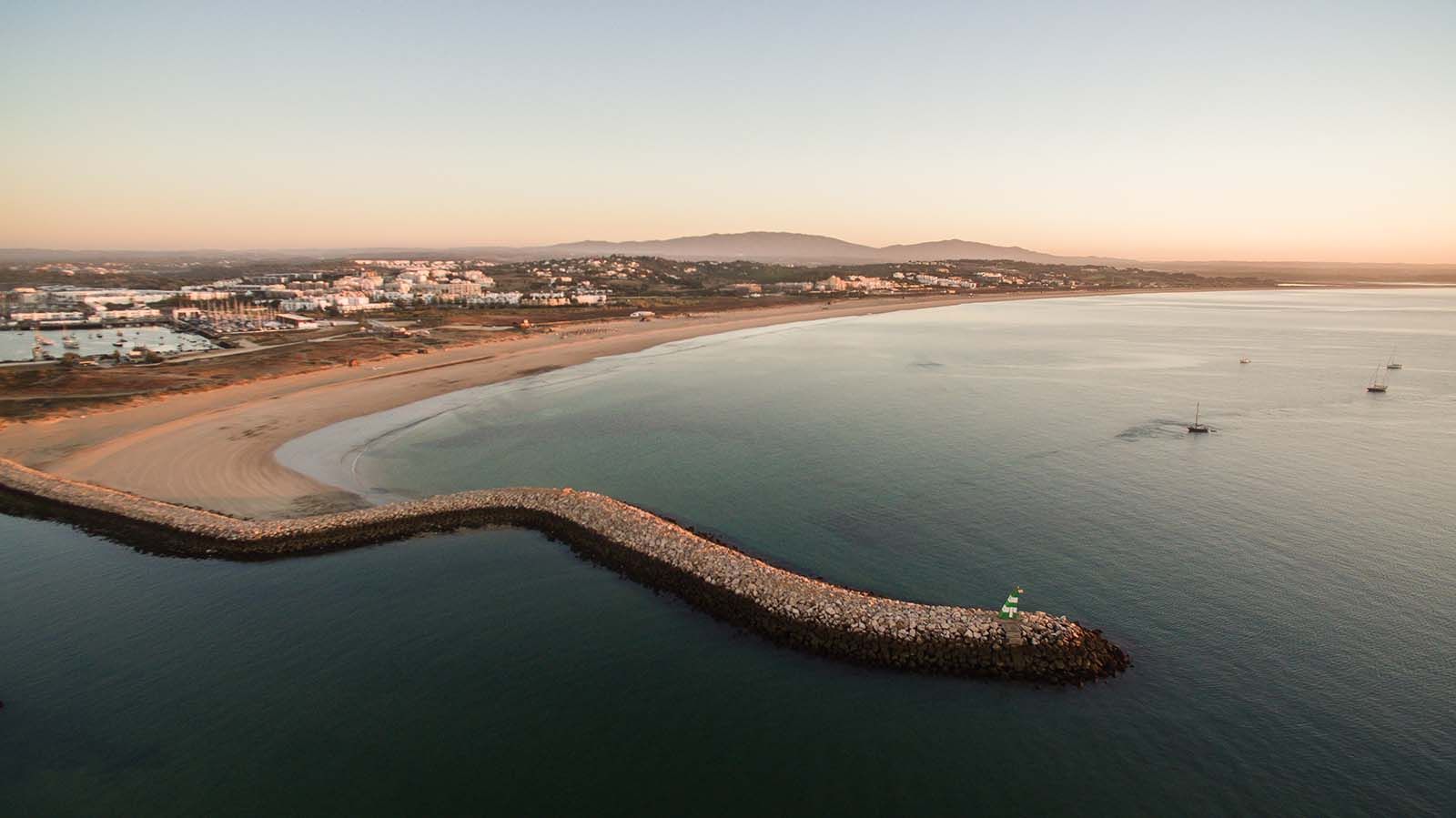
Meia Praia beach in Lagos, Algarve, Portugal © Shutterstock
Lagos is in southern Portugal, on the western edge of the Algarve coast. It’s about 300 km south of Lisbon and 90 km from Faro, the region’s main airport.
Often listed among the best places to visit in Portugal, Lagos is a key stop on many Algarve or southern Portugal itineraries. From here, you can explore the dramatic cliffs of Ponta da Piedade, relax on the wide sands of Meia Praia, or take day trips to nearby towns like Sagres and Portimão. Its location makes it perfect for combining beach time with exploring the Algarve’s wilder, less-developed western coast.


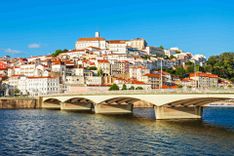
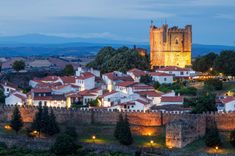

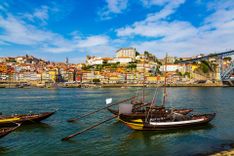










Lagos is compact and walkable, but reaching beaches, nearby towns, or the Algarve’s wilder coast is easier with a mix of transport options.

Lagos, Portugal @ Shutterstock
Wondering how long to stay in Lagos? Plan for at least three days to see the highlights – from strolling the Old Town and marina to visiting the dramatic cliffs at Ponta da Piedade and relaxing on beaches like Meia Praia or Praia do Camilo. This gives you time to enjoy a boat trip to the grottoes, sample fresh seafood, and catch a sunset from the lighthouse.
If you’re building a 10-day Portugal itinerary, Lagos is an ideal base for three to five days. That allows for day trips to Sagres, the wild Costa Vicentina, or quieter Algarve towns like Salema and Burgau. Staying longer means you can explore more beaches, try paddleboarding or surfing, and enjoy the slower pace that sets in once the day-trippers leave.
Lagos has accommodation for every style and budget. Here’s where to stay, depending on your travel type.
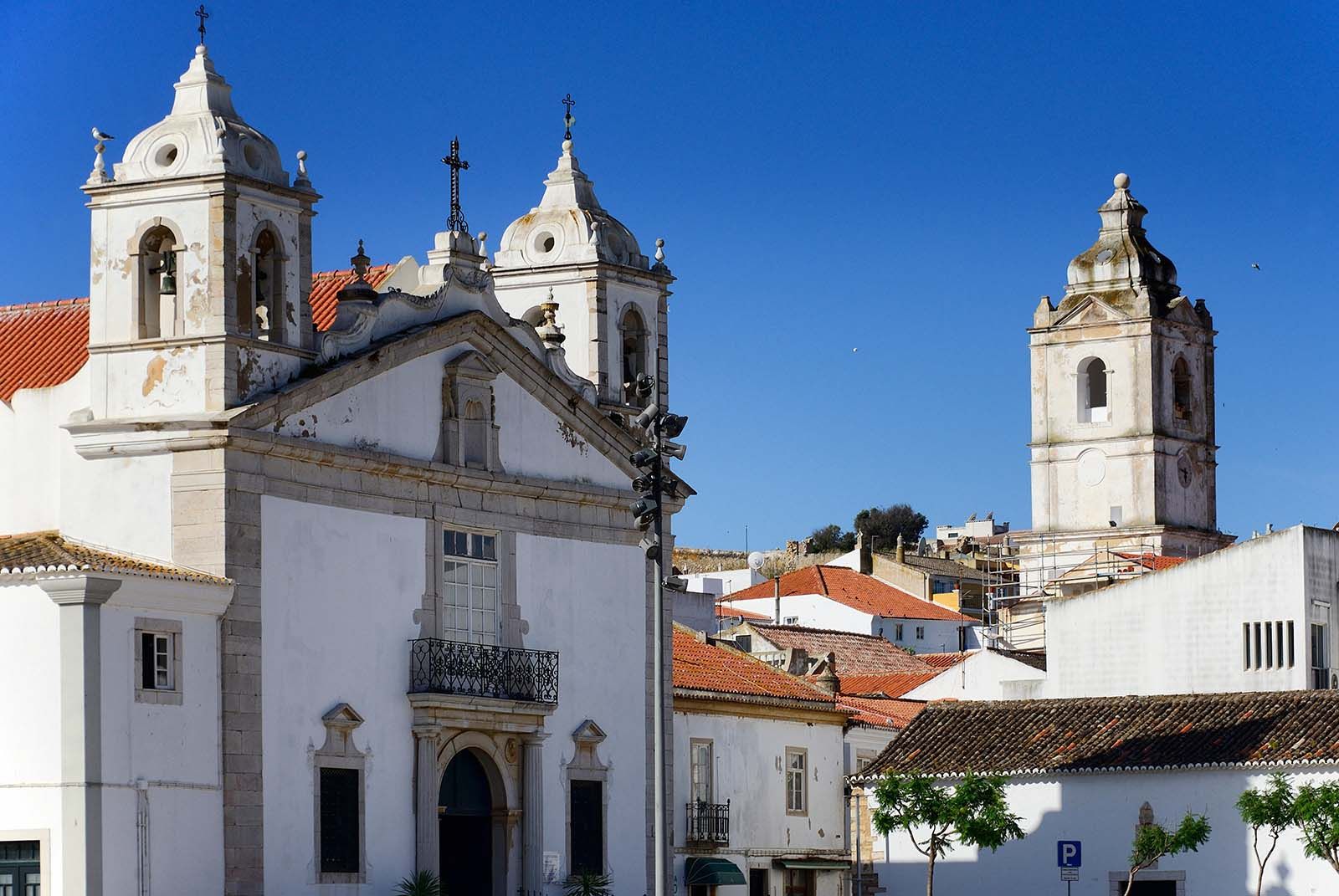
Lagos old town © Shutterstock
Lagos blends coastal beauty with centuries of history: fortress walls, cobbled lanes, and a coastline carved into arches, grottoes, and hidden coves. You can spend one day here exploring the Old Town, and the next paddling through sea caves or lazing on golden sand. Many of the best beaches in Portugal are on Lagos’s doorstep, from dramatic cliff-backed coves to sweeping bays perfect for watersports. The town’s relaxed vibe means you can balance sightseeing with slow lunches, evening strolls along the marina, and sunset views from the clifftops. Here are some of the best things to do in Lagos.
Praia do Camilo is one of the Algarve’s postcard views – a tiny cove tucked between cliffs, often listed among the best beaches in the Algarve. You reach it via a long wooden staircase, with each step offering a better view of the golden rocks and turquoise sea below. On calm days, the water is perfect for swimming or snorkeling. The beach is split into two by a rock wall with a tunnel carved through – a quirky detail that makes it especially fun for kids to explore.
Because it’s small, space is limited in summer, so go early or late in the day for a more peaceful visit. There’s one restaurant above the steps, but no shops nearby, so bring what you need if you’re planning to stay for a while. From central Lagos, it’s about a 20-minute walk, or a short drive with limited paid parking nearby.
Ponta da Piedade is Lagos’s most dramatic natural attraction – a headland carved into cliffs, caves, and arches by centuries of Atlantic waves. From the lighthouse, paths lead along the clifftops with views over the coastline, while a steep staircase descends to a small cove where boat tours depart for the grottoes.
The scenery is spectacular at any time, but early morning or late afternoon gives you softer light and fewer crowds. Wear sturdy shoes if you’re walking the paths, and bring water – there’s little shade along the way. You can also kayak or paddleboard here for a more adventurous angle on the caves.

Beach of Camilo, Lagos, Algarve, Portugal © Shutterstock
Inside its 16th-century walls, Lagos Old Town is a maze of cobbled streets, tiled facades, and leafy squares where café tables spill into the sunshine. This is where Lagos’s history comes alive – from the ornate baroque interior of Igreja de Santo António to the small museums telling stories of the Age of Discoveries.
It’s best explored slowly, without a fixed route, letting side streets lead you to hidden courtyards or shops selling local crafts. In summer, street musicians and market stalls add to the atmosphere. Evenings are lively but not overwhelming, with plenty of restaurants for all tastes and budgets.
Wear comfortable shoes – the stones are uneven – and try to catch the golden light just before sunset for photos of the old walls. The Old Town is small enough to see in half a day, but its charm might tempt you back more than once during your stay.
Meia Praia is the opposite of Lagos’s small cliff-backed coves – a sweeping four-kilometer stretch of golden sand that always feels spacious, even in August. The wide, shallow shoreline makes it one of the best beaches in Portugal for families, and its steady breeze attracts kitesurfers and windsurfers.
You’ll find a scattering of beach bars and restaurants, plus sunbed rentals and lifeguards in summer. The western end is closest to Lagos Marina, about a 15-minute walk from town, while the eastern side is quieter and more natural.
It’s a great choice if you want room to walk, run, or play without dodging crowds. Parking is easy along the road behind the dunes, and there’s a small train station nearby for those coming from further afield. Stay for sunset and you’ll see the whole bay glowing in warm light – a sight many visitors remember long after they travel to Lagos.
This compact 17th-century fort sits right at the harbor entrance, once guarding Lagos from pirate raids. Its thick stone walls enclose small exhibitions on maritime history, with occasional art displays in summer.
The highlight is walking the ramparts for views over the harbor, Praia da Batata, and the Old Town walls. Entry is inexpensive, and you can easily combine a visit with a stroll along the waterfront or time on the nearby beach.
It won’t take more than 20-30 minutes to explore, but it offers a nice dose of history between beach visits. In the evenings, the setting sun reflects off the water, making it a lovely photo spot. The fort’s location means it’s impossible to miss if you’re walking from the marina toward the Old Town or heading to Praia da Batata for a quick swim.
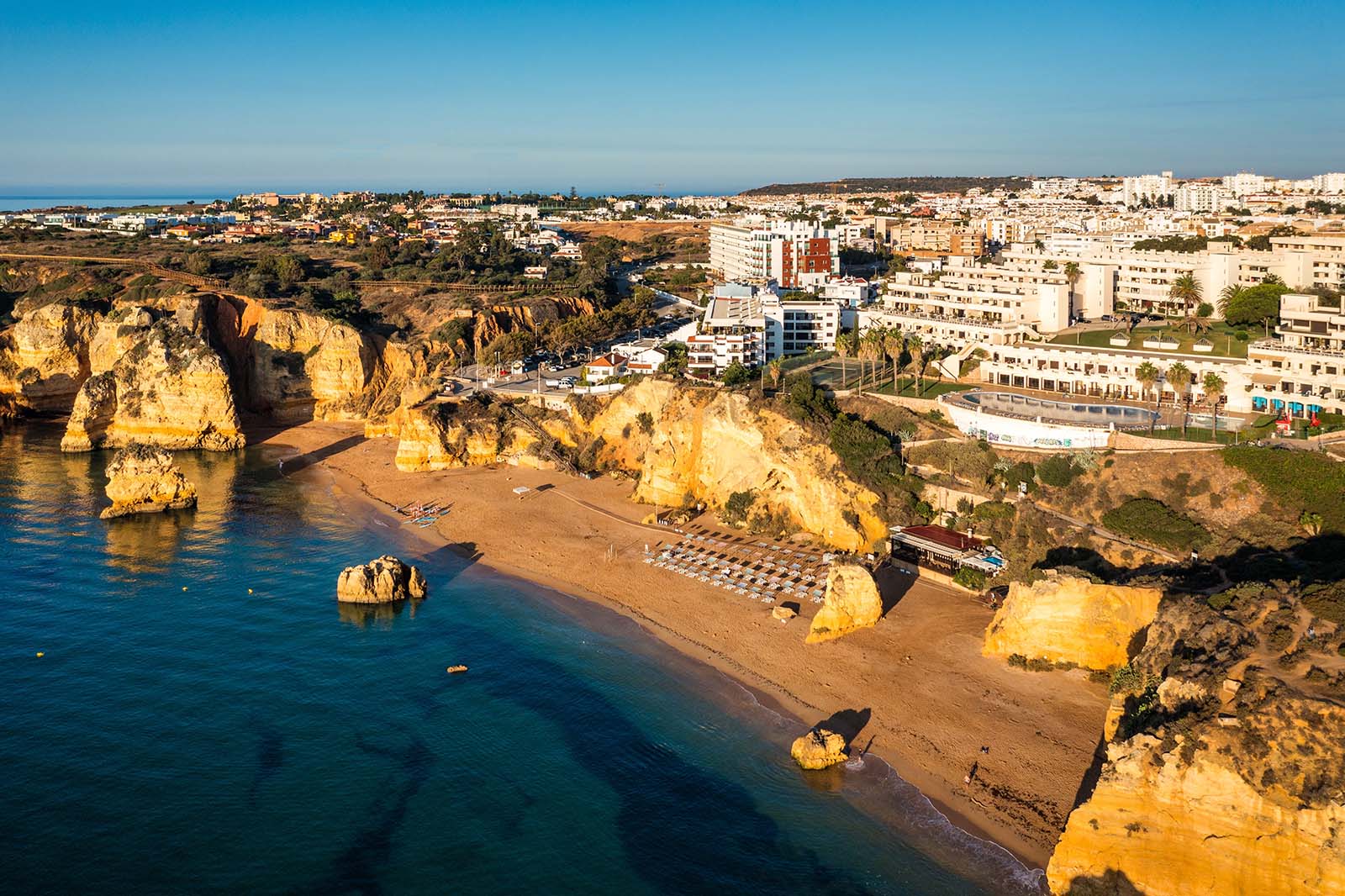
Praia de Dona Ana beach, Lagos, Portugal © Shutterstock
Praia Dona Ana is one of Lagos’s most famous beaches – a sheltered cove surrounded by tall golden cliffs and scattered with sea stacks. The sand is soft, the water clear, and the setting feels almost enclosed from the outside world.
It’s easy to reach from the center in about 15 minutes on foot, with stairs leading down from the cliff-top road. In summer, it’s popular with both locals and visitors, so come early if you want a good spot. Facilities include sunbeds, umbrellas, and a beach café.
Swimmers should be mindful of cooler water temperatures here due to Atlantic currents. Still, on a sunny day, the contrast between the cliffs and the blue-green water makes this one of the most photogenic and relaxing spots in the Algarve.
Lagos’s grottoes and sea caves are a highlight of the coastline, and boat tours let you see them from the best angle. Departing from the marina or Praia do Batata, small boats navigate between sea stacks, through rock arches, and into caves too tight for larger vessels.
Tours usually last about an hour and cost around €20. Morning trips offer calmer water and better light inside the caves. Guides often share local history and point out rock formations with playful names – from “Elephant” to “Cathedral.”
If you prefer more independence, kayak or paddleboard tours let you get even closer to the cliffs. Either way, this is one of those Lagos experiences that’s as much about the journey as the destination – a chance to see the coastline’s colors and textures up close.
Near the marina, the Mercado Municipal is where locals shop for fresh fish, fruit, and vegetables. The ground floor is dedicated to seafood – you’ll see gleaming sardines, octopus, and clams laid out on ice – while the upper floor has produce stalls and a few small eateries.
It’s open most mornings, with Saturday being the busiest and most atmospheric day. Even if you’re not cooking, it’s worth a visit for the local color, the chance to chat with stallholders, and maybe pick up snacks for the beach.
The building itself is modern and functional rather than charming, but the products are fresh and authentic. Arrive early for the best selection, especially if you’re after shellfish. From here, it’s a short walk to the marina cafés if you want to continue your morning with a coffee by the water.
Praia do Porto de Mós is a broad, breezy beach backed by cliffs, with soft sand and space to spread out. It’s less busy than the smaller coves closer to town, making it a great choice for a quieter day.
Waves can be stronger here, so it’s popular with surfers and bodyboarders, but there are also calm days perfect for swimming. Two beachfront restaurants serve fresh fish and chilled drinks, ideal for a long lunch.
The beach is about a 5-minute drive from the center of Lagos, with free parking along the road above. On foot, it’s a pleasant 25-30 minute walk, though uphill on the way back. The surrounding cliffs also have walking trails with fantastic views, so bring your camera if you want a mix of beach and light hiking.
For an active way to experience Lagos’s coastline, join a guided kayak tour from Praia do Batata or the marina. You’ll paddle past sea stacks, into hidden caves, and stop at small beaches only accessible from the water.
Guides keep the pace manageable, and most tours last about two hours. Expect to pay €15-€20, often including snorkel gear. Morning trips are best for calm seas and clearer water, while afternoons bring stronger winds but also a livelier atmosphere on the water.
Kayaking gives you more time in each spot than a boat trip, and the quiet paddling lets you hear the echo of waves in the caves. It’s a must if you enjoy combining light exercise with scenery, and one of the most memorable outdoor activities you can do when you travel to Lagos.
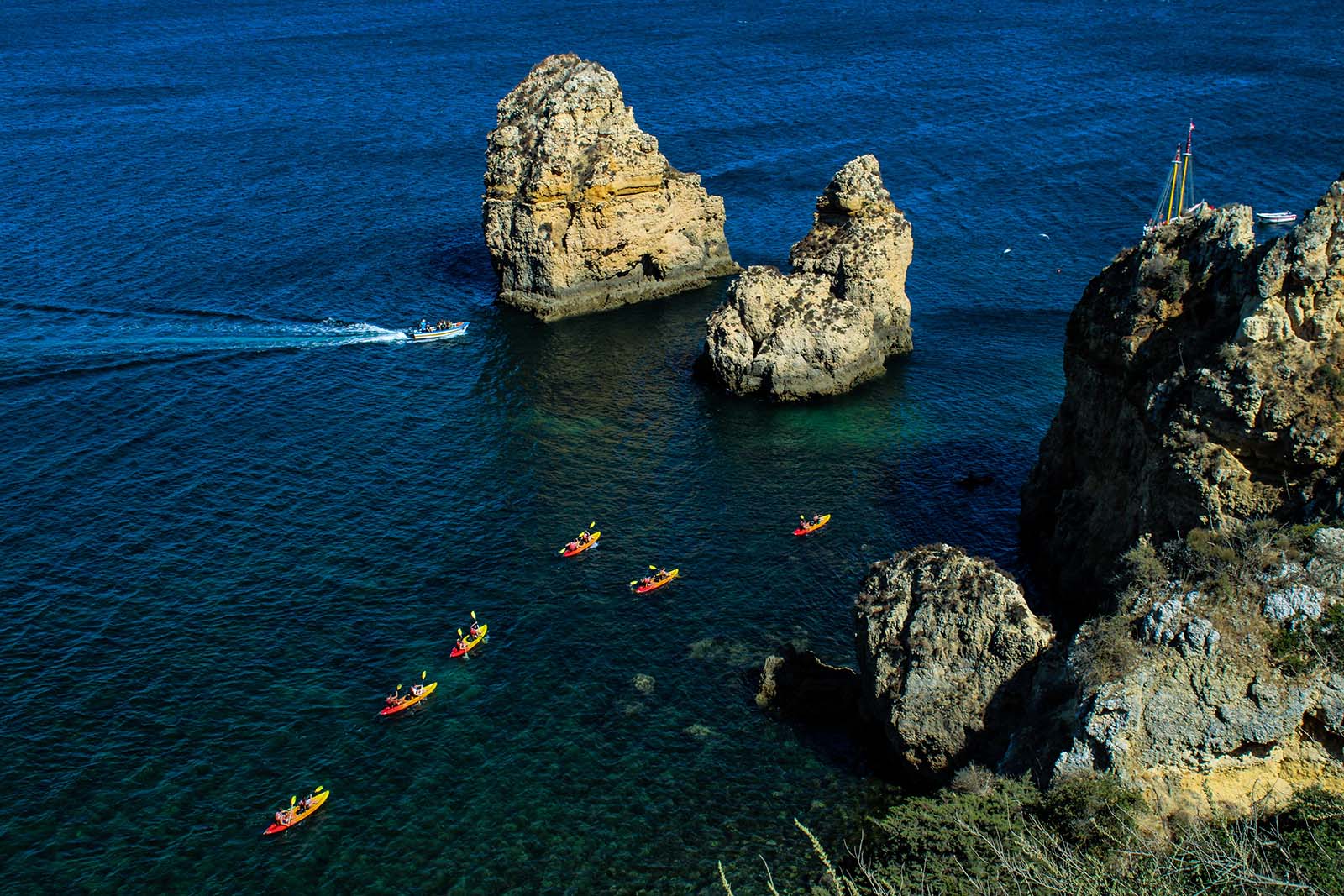
Kayaks around Lagos cliffs © Shutterstock
Lagos enjoys a Mediterranean climate, with hot, dry summers and mild, wetter winters. The best time to visit Portugal’s south coast depends on the kind of trip you’re after – beach days, coastal hikes, or quieter sightseeing. Thanks to its location in the Algarve, Lagos gets more sunshine than most of the country, but coastal breezes can make evenings cooler. Average temperatures range from about 54°F (12°C) in January to 82°F (28°C) in August, though summer heatwaves can push highs above 95°F (35°C). For up-to-date forecasts, check IPMA.
Lagos has a thriving food scene – a mix of traditional Portuguese cooking, fresh Atlantic seafood, and modern cafés that wouldn’t be out of place in a big city. Here’s what to eat and where to eat in Lagos to make the most of your time here.

Grilled sardines, Portugal
Here are some unique experiences we can arrange for your tailor-made Lagos trip – all private, flexible, and designed by our local travel experts.
Discover Portugal's most captivating stories
Use Rough Guides' trusted partners for great rates
written by
Olga Sitnitsa
Online editor at Rough Guides, specialising in travel content. Passionate about creating compelling stories and inspiring others to explore the world.